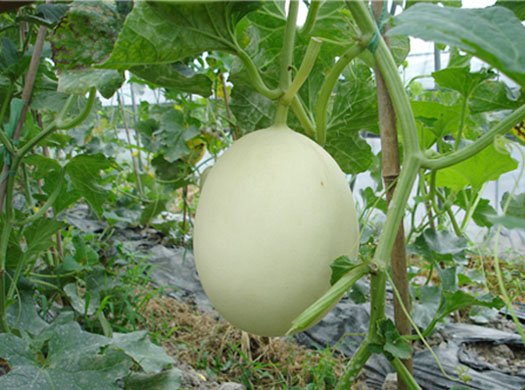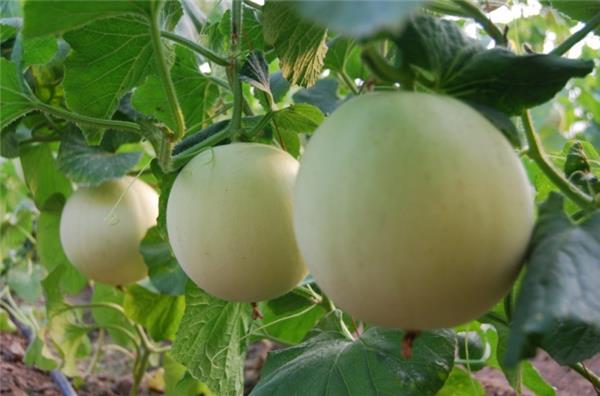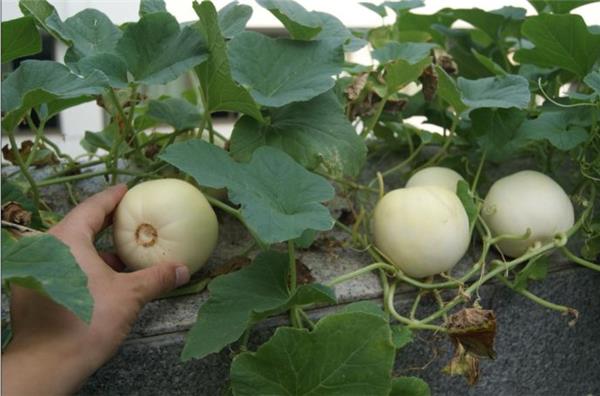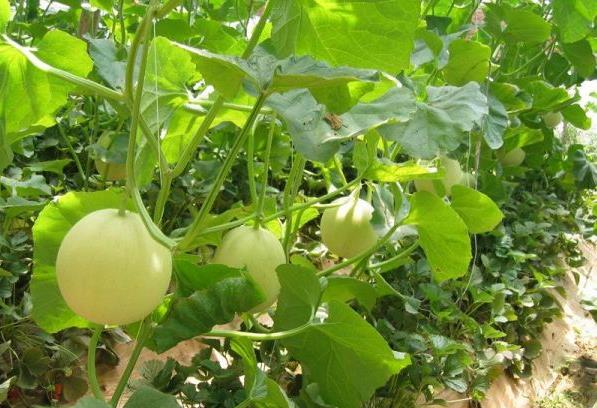Detailed explanation of cultivation techniques of muskmelon
More and more people are keen on growing vegetables on the family balcony, but it is not enough to have an empty cavity of blood and hobbies. Professional skills and knowledge are essential. Melon is a seasonal fruit with a crisp taste, which is very popular with people, so many vegetable lovers want to try to grow melon, so let's talk about how to deal with the seeds before sowing.

Muskmelon cultivation techniques
1. Seed selection: remove the seeds from the packaging bag or bucket, remove the deformities of seed doping, mildew, damage, and worm-eaten seeds, and leave full, uniform seeds for reserve.
two。 Drying seeds: spread the selected seeds evenly on clean paper and choose sunny, windless and sunny weather to dry. When drying, turn it every 2 hours so that the seeds are evenly exposed to the sun. Through drying, the water content of seeds is the same, promote seed ripening, enhance seed vigor, improve seed germination energy and germination rate, at the same time, it also has the effect of sterilization.
3. Seed soaking: generally use the method of soaking seeds in warm soup, put the sun-dried seeds in 55-60 degrees water, the amount of water is 5 times the volume of seeds, soaking seeds for 20-30 minutes. Then remove the seeds and dry them. Then soak the seeds in warm water of 28-30 degrees for 6-8 hours.

4. Sprouting: dry the soaked seeds, wrap them with clean wet gauze and germinate at a temperature of 25-30 degrees. It can sprout in about 24 hours, and when the seeds are just beginning to show white, they can be sown. When accelerating the bud, try to control the bud length within 0.5 cm to prevent the bud from growing too long. when the bud is too long, it is easy to break the bud when sowing and reduce the emergence rate.

Why do you pick the heart when growing melons? How to pick the heart? To pick the heart is to hit the top. Coring is the key technical measure of muskmelon cultivation and management. Due to the different characteristics of varieties, muskmelon has different melon-bearing habits. Some varieties bear melons early and more on the main vines, for this kind of varieties, it is often appropriate to pick the heart late, using the main vines to knot melons early and more, some varieties with main vines to knot melons early and less, but son vines to knot melons early and more. it is necessary to pick the heart of the main vine to use the son vine to knot melons, and there are also melons that use sun vines to knot melons; some varieties are late in the main vines and son vines, but the first section of Sun vines can knot melons, then the main vines and son vines have to be heart-picking, using Sun vines to knot melons. For the main vine melon varieties, the heart can be picked after 4 true leaves. For varieties that use daughter vines or grandson vines, in order to promote 12582 rural ICT website plants to give birth to daughter vines as soon as possible, they should pick the tip in the seedbed (pick the heart). That is, when the two true leaves of the seedling are unfolded and exposed, when the tissue is tender in the morning, the growing point of the seedling is plucked off with a thin stick or bamboo stick. Be careful when picking the tip, dial in the opposite direction of the growing point, move gently, and do not hurt the adjacent axillary buds. Although some melons are produced by using son or grandson vines, they do not pick the tip, but pick the heart when the seedlings have four true leaves. This method is not as early as picking the tip, but the yield is slightly higher, so it is suitable for middle and late maturing varieties.

Matters needing attention during the ripening period of muskmelon fruit
The main results are as follows: 1. According to the market and weather conditions, the growth period of each variety is different in different climatic conditions and cultivation methods. The pollination date of each variety can be recorded, and then combined with the planted varieties, climate and cultivation methods to infer the maturity date.
2. The maturity can be judged according to the skin color and other traits of the variety, such as yellow skin color of yellow skin variety, white skin color of white skin variety or milky white, Elizabeth type mature with fragrance and so on. The firmness of the fruit changes when it is ripe. You can gently press the navel peel with your fingers to feel elastic, indicating maturity. The spiny hairs on the surface of the fruit or stalk will fall off with the touch of the hand, and the leaflet and tendrils in the node position of the fruit are green, yellow and dry when they are ripe.
Related
- Wuhan Hospital Iron Tree Blooming Result Was Instantly Frightened by the Gardener Master
- Which variety of camellia is the most fragrant and best? Which one do you like best?
- What is the small blue coat, the breeding methods and matters needing attention of the succulent plant
- Dormancy time and maintenance management of succulent plants during dormancy
- Minas succulent how to raise, Minas succulent plant pictures
- What are the varieties of winter succulent plants
- How to raise succulent plants in twelve rolls? let's take a look at some experience of breeding twelve rolls.
- Attention should be paid to water control for succulent plants during dormant period (winter and summer)
- Watering experience of twelve rolls of succulent plants
- Techniques for fertilizing succulent plants. An article will let you know how to fertilize succulent plants.



